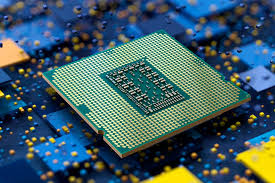What are the differences between various types of computer processors (e.g., Intel vs. AMD)?
BY: DA PUBLISHED: 2024-03-31 13:01:47 | UPDATED: 2025-11-08 05:45:10 | Views: 932
Intel and AMD are the two primary manufacturers of computer processors, and while they serve the same fundamental purpose of powering computing devices, there are several differences between their processor architectures, performance characteristics, and market positioning. Here's a comparison between Intel and AMD processors:

Architecture:
- Intel: Intel processors typically use the x86 architecture, with recent generations featuring microarchitectures such as Skylake, Kaby Lake, Coffee Lake, and Tiger Lake.
- AMD: AMD processors also use the x86 architecture, but they feature their own microarchitectures, such as Zen, Zen+, Zen 2, and Zen 3. AMD's Ryzen series processors are based on the Zen microarchitecture.
Performance:
- Intel: Historically, Intel processors have been known for their strong single-threaded performance and higher clock speeds. They have often been favored for gaming and certain professional applications.
- AMD: AMD processors have made significant strides in recent years, offering competitive single-threaded performance while excelling in multi-threaded workloads. AMD's Ryzen processors typically offer more cores and threads compared to their Intel counterparts at similar price points.
Core and Thread Count:
- Intel: Intel processors traditionally offered fewer cores and threads compared to AMD processors. However, recent Intel processors have started to increase core counts with their Core i9 and Xeon series processors.
- AMD: AMD processors, particularly in the Ryzen series, offer higher core and thread counts at various price points. This makes AMD processors more suitable for multi-threaded workloads such as content creation, video editing, and 3D rendering.
Integrated Graphics:
- Intel: Many Intel processors come with integrated graphics, denoted by the "Intel HD Graphics" or "Intel Iris Xe Graphics" branding. These integrated graphics solutions offer basic graphics performance suitable for everyday tasks and light gaming.
- AMD: AMD Ryzen processors with integrated graphics feature Radeon Vega graphics. AMD's integrated graphics solutions generally offer better performance compared to Intel's integrated graphics, making them more suitable for casual gaming and multimedia tasks.
Pricing:
- Intel: Intel processors have traditionally been priced higher than AMD processors, especially at higher performance tiers. However, Intel has faced increased competition from AMD, leading to more competitive pricing in recent years.
- AMD: AMD processors often offer better value for money compared to Intel processors, especially in terms of core count and multi-threaded performance. AMD processors are generally more affordable across various price segments.
Compatibility and Platform:
- Intel: Intel processors typically require motherboards with Intel chipsets, such as those based on the LGA 1200 socket for 10th and 11th Gen Intel Core processors.
- AMD: AMD processors use sockets such as AM4 for Ryzen processors and sTRX4 for high-end desktop (HEDT) processors like Threadripper. AMD's AM4 platform offers better long-term compatibility, with support for multiple generations of Ryzen processors on the same motherboard.
Overall, both Intel and AMD offer a range of processors suited for various computing needs, and the choice between them depends on factors such as performance requirements, budget, and specific use cases.
You May Also Like

5G: What It Means for You
1 year agoLatest Videos
Top 5 AMAZING Places to Visit in Ethiopi...
Oct 18, 2025Sea waves & beach drone video
Jun 21, 2025Related Articles

The Future of AI in the IT Industry: Tra...
1 year ago
5G: What It Means for You
1 year ago
